Fall bird migration is in full swing in Rhode Island. Here's the best birding spots.
Bird-watchers are gathering binoculars and field guides for one of the biggest events of the year: the fall bird migration.
Billions of birds are on the move, and that prompts hundreds of humans to head into the wilds of Rhode Island to observe, identify and generally marvel at these winged visitors.
Many did the same thing last spring, but fall presents unique challenges, according to Charles Clarkson, director of avian research at the Audubon Society of Rhode Island.
Clarkson, of Middletown, is an ornithologist with a doctorate in environmental sciences and high-flying enthusiasm for anything to do with birds.
Seahorses, giant whale skulls and more: Come see what's new at Audubon Nature Center
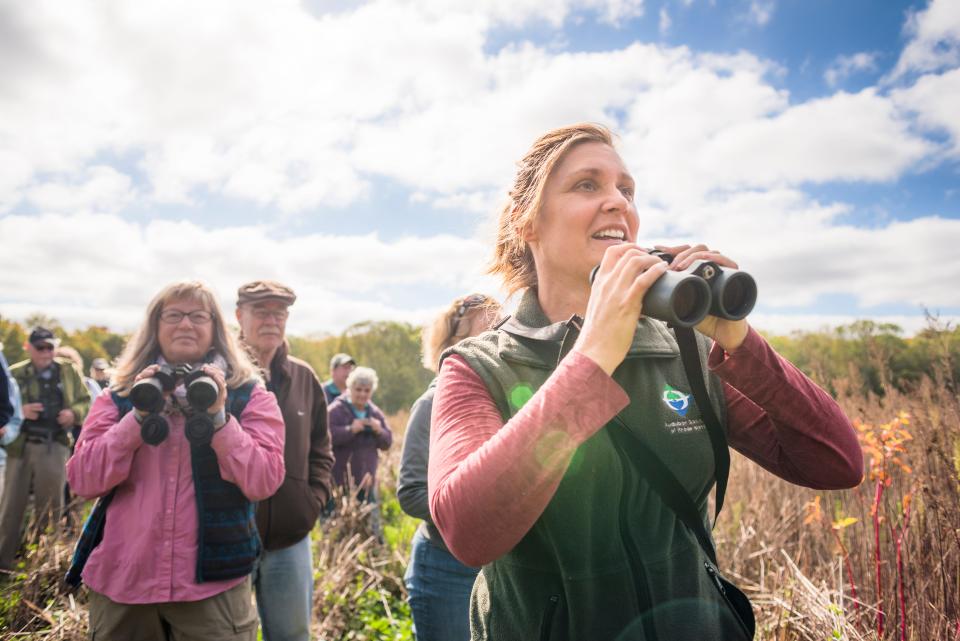
“The more you learn, the more in awe you are,” he says.
In fall, breeding time is over. Males have shed their colorful plumage, and there is less vocalizing to attract mates.
Both things make it harder to pick out birds high in the tree canopy, but birders know the rewards for patience and persistence: potential sightings of thousands of birds and multiple species.
Race against time: Rising seas push the saltmarsh sparrow to the edge of extinction
From bald eagles to salt marsh sparrows: RI's Bird Atlas tells us about important changes
Because some shore birds began traveling as early as June, Clarkson advises thinking of the migration as a train, “with pulses depending on weather and favorable tailwinds.”
Here’s information on how and where to catch that train.
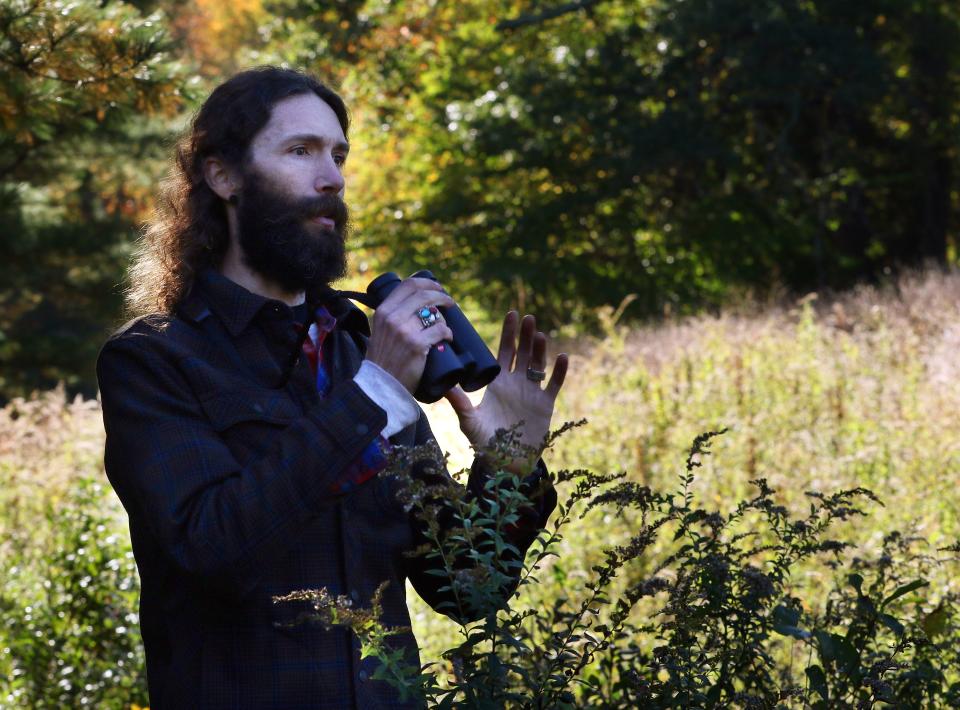
Helpful apps and equipment for bird-watching
BirdCast.info — This amazing website pinpoints the best times to observe migrating birds based on NEXRAD (Next Generation Radar) data, the same radar used in weather forecasting.
“It’s a really great tool for us as researchers and for the public to pinpoint the best times to see birds,” Clarkson says.
Enter a state or county into the search tool and BirdCast “provides summaries of radar-based measurements of nocturnal bird migration, including estimates of the total number of birds migrating, their directions, speeds, and altitudes,” according to the website.
The site is a wealth of additional information, including how environmental issues affect migration timing, pathways and population size.
Field guides — Whether you go for a book or an app, Clarkson mentions the National Audubon Society's "Field Guide to North American Birds" or the free Audubon Bird Guide app, and the "Sibley Guide to Birds" or the Sibley eGuide to Birds. Both have photos and descriptions to help with identification.

Binoculars — “You want binoculars with a fairly wide field of view,” Clarkson says. “It can be hard to focus on a bird high in the trees. When you’re able to capture more of the canopy, you can see movement,” which helps direct your vision. A power of 7 or 8 for magnification allows for that wide field.
There is a trade-off on the objective, which is the lens at the bigger end of the binoculars. Bigger lets more light in than smaller lenses but is heavier and harder to hold steady.
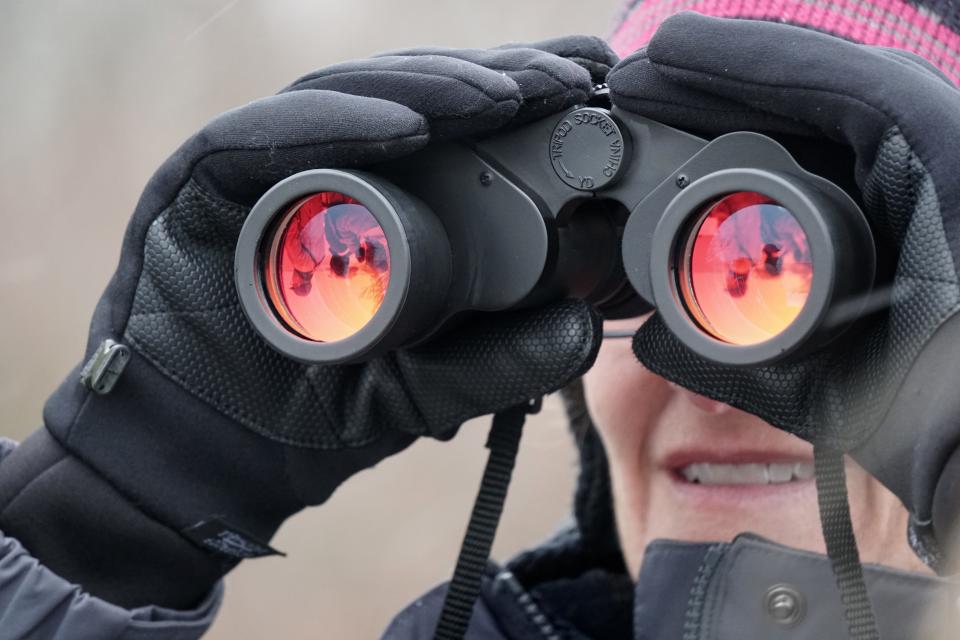
He recommends optics of 7X32 or 8X40, with the first number indicating magnification and the second the diameter of the objective lens in millimeters. He also says to look for binoculars described as “fog proof” and that are “well armored and not likely to break if you drop them.”
Where to go: At the shore
“There are good spots anywhere along the coast,” Clarkson says. “Coastal shrubs are rich in insects and there is fruit in abundance,” both of which migrating birds seek out to fuel their overnight flight.
Looking for a great birdwatching spot?: Try this former Navy site in North Kingstown
Best place for a hike and osprey spotting?: Try the Great Swamp in South Kingstown
He notes, however, “The turnover rate along the coast is high. Birds tend to refuel quickly and leave the area. So take the time to go on multiple days.”
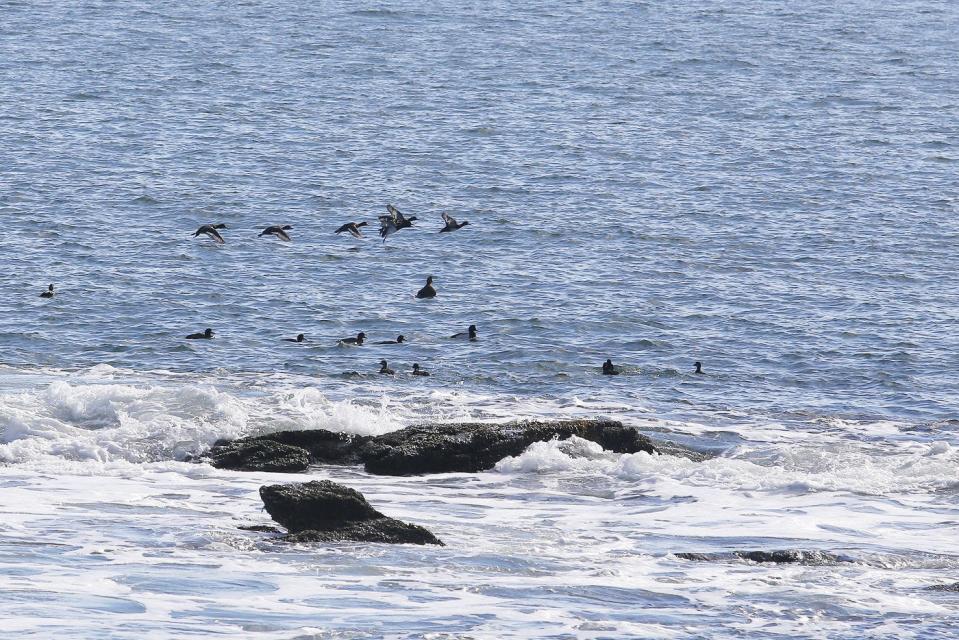
Acknowledging that it’s hard to narrow down “favorites,” he suggests Sachuest Point National Wildlife Refuge, Middletown; Trustom Pond National Wildlife Refuge, South Kingstown; and Napatree Point Conservation Area and Lathrop Wildlife Refuge on Winnapaug Pond, both in Westerly.
Walking RI: At Trustom Pond in South Kingstown, silence is golden
Walking RI: Coastal views and prime bird-watching at Tiverton's Emilie Ruecker preserve
Don Heitzmann of Exeter, who volunteers, serves on the board of the Audubon Society of Rhode Island and goes birding “many times a week,” concurs on Napatree, with a caveat: there is about a mile-long walk along this peninsula-like spit of sand to a lagoon.
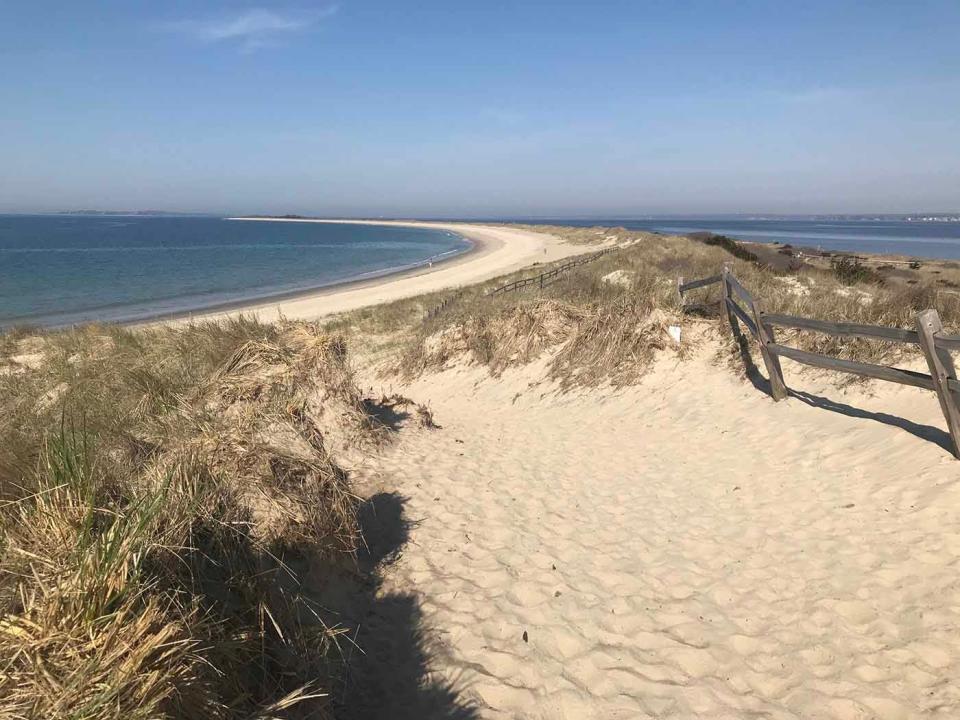
The reward is a plethora of species with interesting names: American oystercatchers, greater yellowlegs and short-billed dowitchers, along with sandpipers, willets and a variety of plovers.
Walking RI: A birder's paradise by the shore in Middletown
Walking RI: Strolling along the shifting sands of Napatree Point
“From time to time you might see rarer birds, like the marbled godwit, with a long, up-curved bill, or the whimbrel, with a long, down-curved bill,” he says.
Where to go: Inland
“Forested regions of western Rhode Island support high numbers [of birds],” Clarkson notes. “The turnover is lower; birds show up and tend to hang out longer.”
His recommendations include the Audubon properties of Waterman Pond Wildlife Refuge and George Parker Woodland Wildlife Refuge in Coventry, and Fisherville Brook Wildlife Refuge in Exeter.
Walking RI: Mingle with birds, beavers, mink and more at Exeter's Fisherville Brook refuge
Walking RI: Who built stone cairns at Coventry's Parker Woodland Wildlife Refuge?
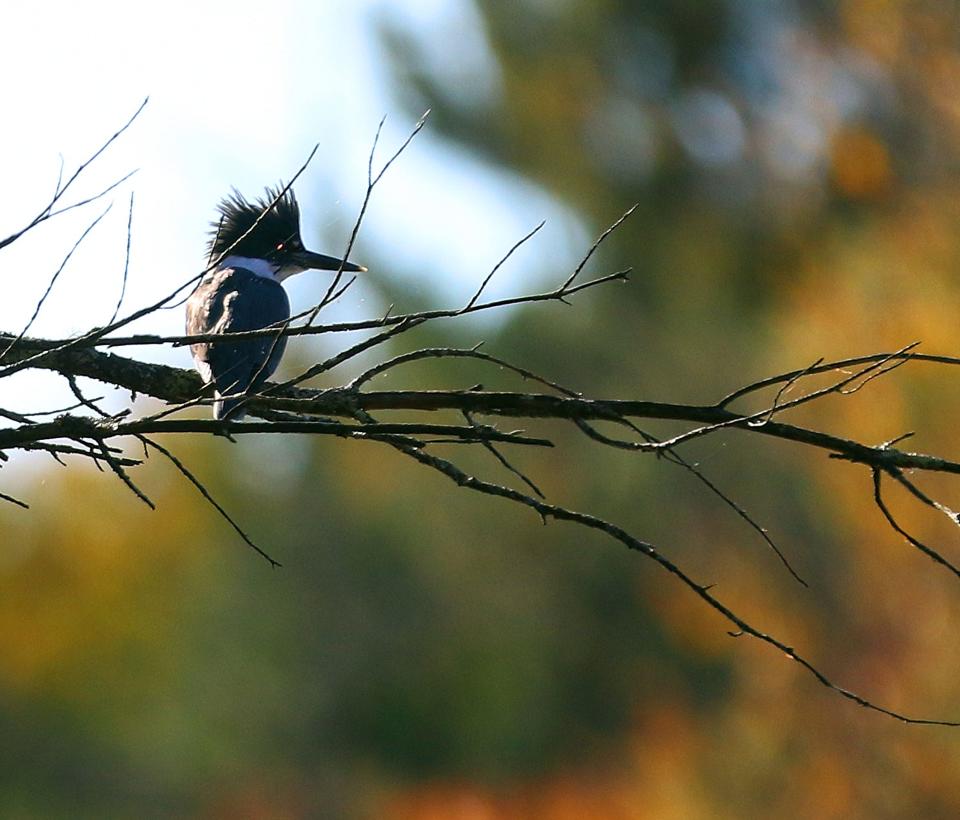
Heitzmann gives thumbs-up to Fisherville, “a beautiful spot to walk. In the fall, lots of migrating songbirds stop there,” although he adds that they are much quieter than in spring.
“Because there is so much forested land in western R.I., those migrants are often spread out a lot,” Heitzmann adds. “A typical walk in the woods reveals fewer birds than what we talked about with a walk on the beach.”
Walking RI: On the hunt for the Tri-State Marker in the Buck Hill Management Area
Audubon volunteer Linda Gardrel of Kingston, a teacher who took up birding in retirement, cites Parker Woodland, “a good place to find thrushes, warblers and woodpeckers of all sorts”; Buck Hill Management Area in Burrillville; and Steere Hill Conservation Area, a property of the Glocester Land Trust.
Walking RI: On the hunt for the Tri-State Marker in the Buck Hill Management Area
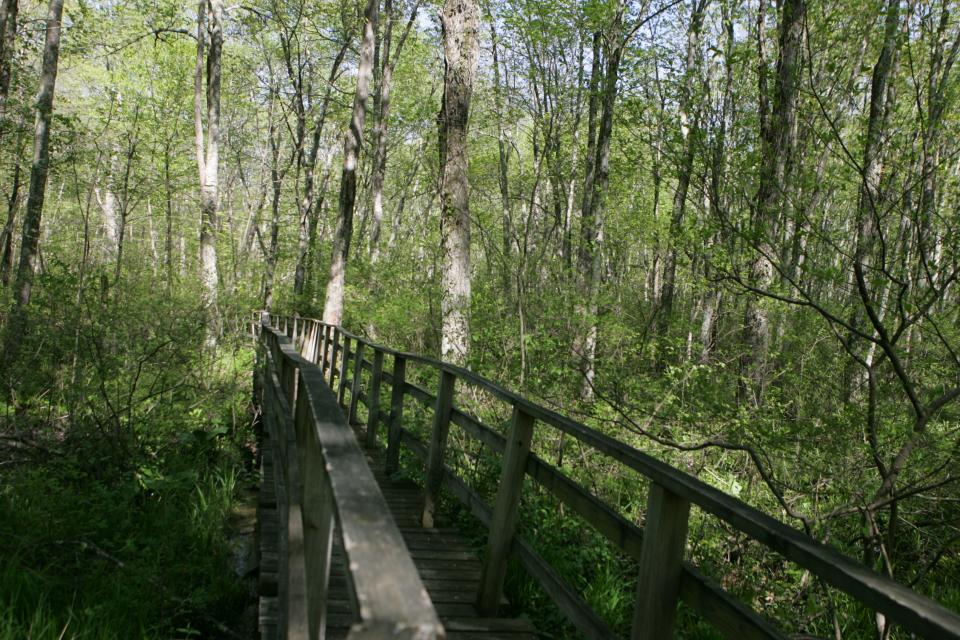
The latter have “lots of insects and berries for lots of protein, fats and sugars,” she says, attracting scores of species.
During migration periods, she recommends going birding as early as possible to see flocks resting and fueling up after a night of flying.
To register for the Audubon Society of Rhode Island's Wednesday morning bird walks, held from 9-11 a.m. at locations around the state, go to asri.org/calendar.
This article originally appeared on The Providence Journal: Fall migration in Rhode Island: Where to go birding

